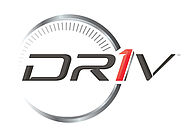Brake calliper

The brake calliper is an essential part of the disc brake system. It must hold and guide the brake pads. With the assistance of one or a number of pistons, it also converts the hydraulic pressure in the brake system into a mechanical...
Function
The brake calliper is an essential part of the disc brake system. It must hold and guide the brake pads. With the assistance of one or a number of pistons, it also converts the hydraulic pressure in the brake system into a mechanical force which presses the brake pads against the brake disc. Brake callipers are located near to the wheels – on the left and right of the front axle. Vehicles with disc brakes at the rear axle too also have brake callipers there.

When the driver presses the brake pedal, overpressure relative to the atmospheric pressure is created in the hydraulic system. This pressure is transmitted to the brake callipers via the brake lines and hoses. When it reaches the callipers, it causes the brake calliper pistons to push the brake pads against the brake disc. As a result, the friction at the brake increases, causing the moving vehicle to slow down or stop completely. When the brake pedal is released, the overpressure in the brake system drops back. The rubber seal on the piston pushes the piston back to its original position. The brake disc can then turn freely again. Designs By far the most widely used design in motor vehicles is the floating calliper. In this design, the pistons only press on the inner brake pad, pushing it onto the brake disc. The outer brake pad is pushed onto the brake disc with the same force by the reaction force of the floating brake calliper. The fixed calliper is another design. It is used primarily on the rear axle. With a fixed calliper, there is a hydraulic piston on each side of the brake disc.
In most cases, the brake callipers are equipped with one or two pistons. Up to four pistons per brake calliper can be installed in high-performance or very heavy vehicles. In very few cases, there are even designs where two complete brake callipers are used for each wheel.
Alongside the service brake, which is needed to slow down a moving vehicle, the brake calliper can also take over the function of the parking brake. The parking brake must secure a stationary vehicle against rolling away. When the parking brake is applied, a force is applied mechanically to the brake piston and thus to the brake pad. This is sufficient to hold the stationary vehicle even on an incline. The parking brake can be applied purely mechanically by means of a lever system (traditional handbrake lever inside the vehicle) or with electrical assistance in the form of an electric motor and a gearbox or a cable (electromechanical parking brake).
Designs
By far the most widely used design in motor vehicles is the floating calliper. In this design, the pistons only press on the inner brake pad, pushing it onto the brake disc. The outer brake pad is pushed onto the brake disc with the same force by the reaction force of the floating brake calliper.

The fixed calliper is another design. It is used primarily on the rear axle. With a fixed calliper, there is a hydraulic piston on each side of the brake disc.
Bauarten des Bremssattels
Bei den Bremssätteln wird zwischen zwei Bauarten unterschieden.
Schwimmsattel
Im Kfz-Bereich wird überwiegend der sogenannte „Schwimmsattel“, auch „Faustsattel“ genannt, verwendet. Bei dieser Bauart drücken die Kolben nur auf den inneren Bremsbelag und legen diesen an die Bremsscheibe an. Der Bremsbelag, der auf der äußern Seite liegt, wird über die Reaktionskraft des schwimmend gelagerten Bremssattels mit der gleichen Kraft an die Bremsscheibe gepresst.
Festsattel
Der Festsattel wird hauptsächlich an der Hinterachse verwendet. Bei diesem befindet sich auf jeder Seite der Bremsscheibe ein Kolben, der durch einen hydraulischen Druck betätigt wird.

Feststellbremse
Neben der Betriebsbremse, die für das Abbremsen eines rollenden Fahrzeugs benötigt wird, kann der Bremssattel auch die Funktion der Feststellbremse übernehmen. Diese hat die Aufgabe, ein stehendes Fahrzeug gegen Wegrollen zu sichern. Die Feststellbremse funktioniert folgendermaßen: Beim Anziehen der Feststellbremse wird eine mechanische Kraft auf den Bremskolben und somit auf den Bremsbelag aufgebracht. Diese Kraft reicht aus, um das Fahrzeug auch im Gefälle zu halten. Die Feststellbremse kann
- mechanisch über ein Hebelsystem (Handbremshebel im Inneren des Fahrzeuges) oder
- elektrisch unterstützt über einen Elektromotor und ein Getriebe, oder einen Seilzug (Elektromechanische Parkbremse EPB) betätigt werden.
Lage und Aufbau des Bremssattels
Die Bremssättel sind im Bereich der Räder untergebracht – jeweils links und rechts an der Vorderachse. Fahrzeuge, die auch an der Hinterachse mit Scheibenbremsen ausgestattet sind, haben auch hier Bremssättel. Bremssättel sind überwiegend mit ein bis zwei Kolben ausgestattet. Bei leistungsstarken oder sehr schweren Fahrzeugen können bis zu fünf Kolben je Bremssattel verbaut sein. In seltenen Fällen gibt es Konstruktionen, bei denen pro Rad zwei komplette Bremssättel verwendet werden.
Safety
Brake callipers are subject to permanent wear caused by external influencing factors (moisture, road grime, road salt, mechanical factors in the form of stone chips, etc.). This can cause seals to come loose and brake fluid to leak out, it can stop the pistons from moving correctly or interfere with the guidance of the brake pads. All of this can result in excess wear of the brake pads and brake discs. In the worst-case scenario, the braking effect can fail completely.
Furthermore, the mechanically operated mechanism of the parking brake is frequently the subject of complaints.If maintenance measures such as cleaning the moving parts are unable to maintain the fault-free function, the road safety of the vehicle will be at risk. In such cases, replacing the brake callipers cannot be avoided.
Environmental protection
Brake callipers can be purchased as new parts and replacement parts. In most cases, garages use replacement parts recycled by the motor vehicle components industry. Alongside the ecological benefits of recycling (approx. 80% of energy saved in production and reduction of CO2 emissions), car drivers benefit from more attractive spare part prices compared with a similar new part offering the same quality, durability and safety.
Downloads
Here you can find all available downloads for the topic "Brake calliper":
All file downloads:











